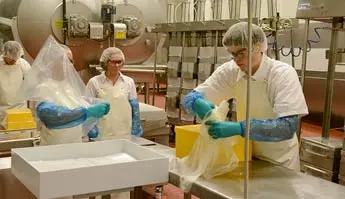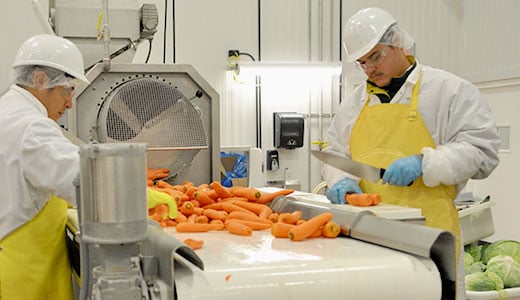Posted by Zosi Team

Hazard Analysis and Critical Control Points (HACCP) plans are the backbone of any food safety program. They prioritize and control potential hazards in food production for the entire food supply chain.
HACCP dates back to the 1960s as a way of ensuring safe food for astronauts on active missions. Today HACCP processes are grounded everywhere and anywhere a company produces or handles food.
If you’re developing a HACCP program in your organization or someone who is seeking certification, you should be aware of the seven HACCP principles.
HACCP Principle 1: Conduct a Hazard Analysis
Hazard analysis identifies the biological, chemical, or physical hazards that could occur at each step in a manufacturing process. This process helps you decide if a hazard is significant or reasonably likely to occur and then determine which control measures to take. It’s critical to identify all the potential hazards that can be associated with raw materials, processes and finished products to ensure you identify all necessary controls.
HACCP Principle 2: Identify Critical Control Points
Critical control points (CCPs) are procedures that can help prevent, eliminate, or reduce food hazards. Examples of CCPs include cooking processes, chilling, and metal detection. However, CCPs are specific to a facility’s unique manufacturing process and products and must be properly identified to control significant or reasonably likely to occur hazards.
HACCP Principle 3: Establish Critical Limits
Once you identify CCPs in your production, you must identify the critical limits you need to meet for each CCP. A critical limit is a minimum value to which a hazard needs to be controlled to ensure a food product’s safety. Critical limits must be validated. To do so, you may need to conduct internal tests or consult outside resources like regulatory guidelines or scientific studies.
HACCP Principle 4: Develop Monitoring Procedures
The fourth step in the HACCP Plan is to establish procedures for monitoring your CCPs and using those results to adjust the process as needed. Monitoring observes whether a CCP exceeds the critical limits and provides a record for verification. Monitoring is either continuous, like automated temperature control systems, or non-continuous, such as visual evaluations.
Your monitoring procedure should consider:
- How you will perform the monitoring?
- Who is responsible for monitoring?
- What you are actually checking and why?
- How will you record results?
- How frequently will you carry out monitoring?
Monitoring responsibilities must be assigned to qualified personnel who are properly trained to perform the tasks and record the results.
HACCP Principle 5: Decide on Corrective Actions
Next, you’ll want to decide on corrective action procedures. In the event that a deviation occurs, and you fail to meet the critical limit, you must have predefined actions ready to set in place. This practice makes sure that no contaminated product makes its way to consumers and determines how to properly dispose of the affected product.
Corrective actions must:
- Determine the disposition of the product
- Identify the root cause
- Demonstrate the CCP is back under control
- Identify preventive measures to prevent recurrence
- Maintain records of the actions taken
HACCP Principle 6: Create Verification Procedures
The sixth HACCP principle is to establish verification procedures. Here, you’re double-checking that your HACCP Plan is correctly carried out and is effective.
Verification includes:
- CCP process step verification
- Plant audits
- Calibration of monitoring instruments
- Overall check that the food safety system is working as intended
HACCP Principle 7: Form Recordkeeping Procedures
You must have records in place to prove your food products are made safely. The HACCP records serve as evidence that your planned monitoring and verification happens as expected, your production stays within critical limits, your corrective actions are in place, and that your product is safe to distribute.
Documentation provides evidence that your team follows the HACCP Plan to regulators and auditors. These records must be complete, accurate, and timely. Remember, HACCP records are legal documents, so you want to make sure they are accurate.
The following are types of HACCP records commonly requested by FDA and USDA Inspectors:
- Critical control point records
- Critical limits records
- CCP monitoring records
- Records associated with deviations
- Verification activity records
- HACCP Plan and supporting documents
Resources & HACCP Certification
Intertek Alchemy offers many comprehensive solutions for HACCP training and HACCP certification at both Basic and Advanced levels. These fully accredited online courses help participants develop and master the HACCP principles outlined above. Start learning with us today!


 Basic HACCP Certification Course
Basic HACCP Certification Course
 Advanced HACCP Certification Course
Advanced HACCP Certification Course
 Basic HACCP Certification – Juice and Beverage
Basic HACCP Certification – Juice and Beverage
 Course Bundle – Basic and Advanced HACCP Certification
Course Bundle – Basic and Advanced HACCP Certification

